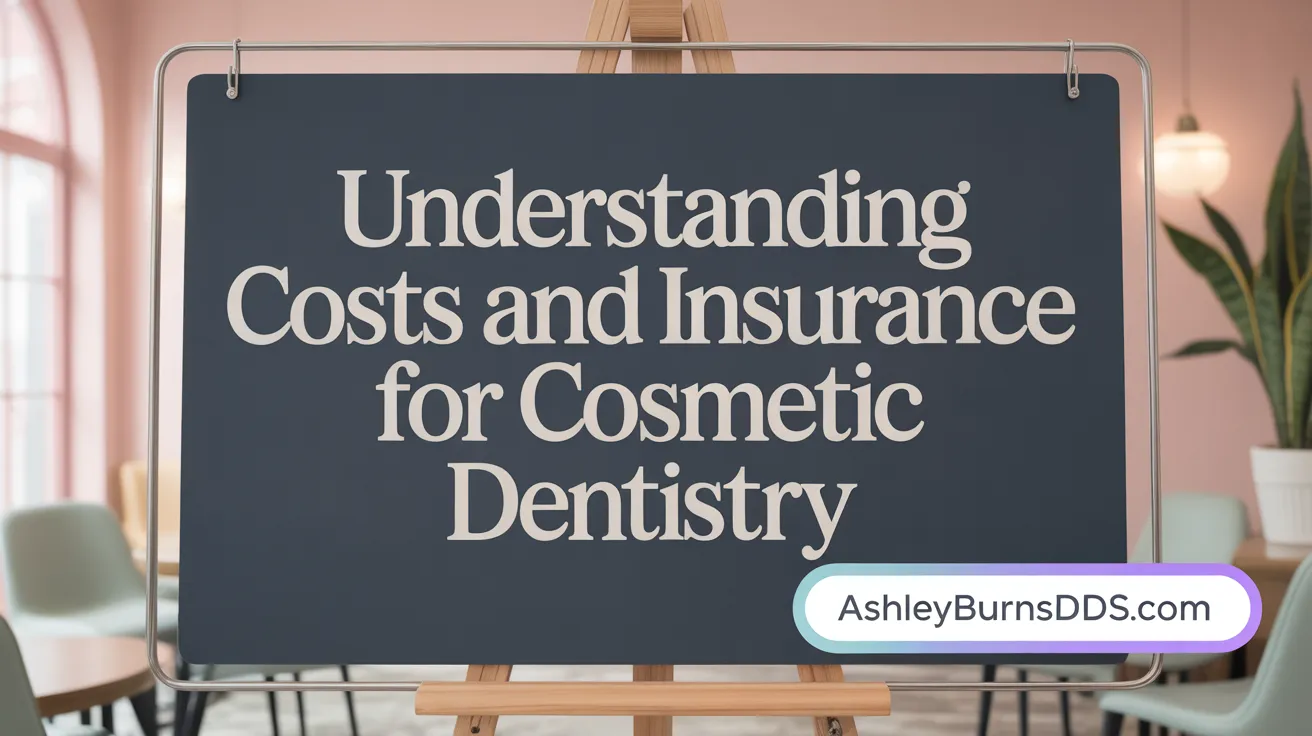Understanding the Rise of Cosmetic Dentistry
Cosmetic dentistry has become increasingly popular as more individuals seek to enhance their smiles and boost their confidence. This field encompasses a variety of procedures aimed at improving the appearance, symmetry, and balance of teeth and gums. From simple whitening treatments to more complex interventions like veneers and implants, cosmetic dental options cater to diverse needs and aesthetic goals. This article explores the most sought-after cosmetic dentistry procedures—dental veneers, teeth whitening, and other popular treatments—highlighting their benefits, procedures, costs, and considerations to help you make informed decisions about your smile makeover.
Dental Veneers: Transforming Smiles with Durable Elegance

What are dental veneers?
Dental veneers are custom-made thin shells of tooth-colored materials such as porcelain or composite resin that bond to the front surface of teeth. They are designed to hide imperfections like chips, cracks, stains, gaps, and misshapen teeth, dramatically improving the appearance of your smile.
What materials are veneers made from and what are their differences?
Veneers are mainly made from two materials: porcelain and composite resin. Porcelain veneers are preferred for their durability, stain resistance, and natural look. They typically last 10 to 15 years or more with proper care. Composite veneers are a less expensive alternative that can be applied in a single dental visit but usually last about 5 to 7 years and are more prone to staining and damage.
What types of veneers are available and how invasive are they?
There are several veneer types:
- Traditional porcelain veneers: require the removal of a small amount of enamel to fit smoothly.
- No-prep or minimal-prep veneers: require little to no enamel removal, making them less invasive.
- Removable veneers: also known as pop-on or snap-on, these are temporary and less common.
What does the veneer placement procedure involve?
The typical process includes two visits:
- Preparation: A small layer of enamel, about half a millimeter, is carefully removed from the teeth. Impressions or digital scans are taken to create custom veneers.
- Bonding: During the second visit, the veneers are bonded to the teeth with dental cement and cured with a special light to ensure a secure fit and natural finish.
How long do veneers last and how should they be maintained?
Porcelain veneers usually last between 10 and 15 years when cared for properly. Maintenance involves regular brushing with a non-abrasive fluoride toothpaste, daily flossing, avoiding biting hard foods that could chip the veneers, and attending routine dental check-ups.
What are the advantages and disadvantages of veneers?
Advantages include a significant enhancement of smile aesthetics by covering multiple imperfections simultaneously. They are stain-resistant, durable, and help boost self-confidence. On the downside, veneer placement involves irreversible enamel removal, possible temporary tooth sensitivity, risk of chips or loosening, relatively high cost (approximately $925 to $2,500 per tooth), and the eventual need for replacement over time.
Teeth Whitening: Brighten Your Smile Safely and Effectively

What is teeth whitening and what types are available?
Teeth whitening is a cosmetic dental procedure designed to remove stains and discoloration from the surface of your teeth, resulting in a brighter, more vibrant smile. There are several types of whitening treatments:
-
Professional in-office treatments: These use powerful bleaching gels often activated by LED or laser light. The process typically takes about an hour and can lighten teeth by multiple shades quickly (Professional Teeth Whitening, Teeth Whitening Procedures).
-
Dentist-prescribed take-home kits: These include custom-fitted trays and bleaching gels that patients use at home over a period, offering gradual but effective whitening (Dentist Take-Home Whitening Kits, Custom Whitening Trays Cost).
-
Over-the-counter (OTC) products: Such as whitening strips, toothpastes, rinses, and gels are widely available, but usually contain lower concentrations of bleaching agents and take longer to show results (Over-the-Counter Whitening Products, Types of Teeth Whitening Treatments).
How effective are professional whitening treatments compared to OTC products?
Professional treatments employ higher concentrations of peroxide compounds and advanced technologies, delivering faster and more noticeable whitening—often within a single session (Effectiveness of Teeth Whitening, Professional Teeth Whitening Benefits). In contrast, OTC products have lower peroxide levels, resulting in milder effects that may require weeks of use to notice differences. Moreover, professional supervision ensures treatment is safe and tailored to individual needs (Safe and Effective Whitening Options).
What are the typical costs of teeth whitening?
The cost varies based on the treatment type:
-
In-office professional whitening: $300 to $1,000 per session, with laser whitening procedures at the higher end (Professional Teeth Whitening Cost).
-
Dentist-provided take-home kits: Approximately $150 to $600 (Dentist Take-Home Whitening Kits).
-
Over-the-counter products: Generally under $100 (Over-the-Counter Whitening Product Prices.
It's important to note that teeth whitening is considered an elective cosmetic procedure and is typically not covered by dental insurance.
What are possible side effects and how to mitigate them?
Common side effects include temporary tooth sensitivity and gum irritation (Whitening Tooth Sensitivity, Risks of Teeth Whitening. These effects are usually mild and short-lived. To reduce discomfort, lower concentration gels can be used, desensitizing toothpaste may help, and it's essential to follow product instructions carefully. Professional guidance is recommended to ensure safety and minimize risks (Professional Whitening Guidance.
How long do whitening results last and how can they be maintained?
Results from professional whitening treatments typically last between six months and three years, influenced by factors like diet, smoking, and oral hygiene habits (Duration of Teeth Whitening Effects, Maintaining Whitening Results). To maintain a bright smile longer, avoid stain-causing foods and drinks shortly after treatment and adhere to good oral hygiene — including regular brushing and dental visits (Oral Hygiene for Whitening).
Comparing Veneers and Other Cosmetic Dentistry Options

How do veneers compare to other cosmetic options like dental bonding and crowns?
Dental veneers are thin, custom-made shells bonded to the front of teeth. They effectively correct chips, stains, gaps, and shape irregularities, providing a natural appearance and long-lasting results, typically lasting 10 to 15 years. In contrast, dental bonding uses tooth-colored resin applied directly to teeth to repair minor flaws. It's a quicker, more affordable option but less durable and more susceptible to stains, with a shorter lifespan of about 2 to 5 years.
Crowns encase the entire visible tooth and are reserved for severely damaged or decayed teeth. While crowns offer strong protection and restore function, the procedure is more invasive, requiring significant tooth reduction.
When is teeth whitening preferred over veneers?
Teeth whitening is an excellent choice for extrinsic stains—those caused by foods, drinks, or smoking—that can be effectively treated by bleaching agents. It is less invasive, more cost-effective, and offers immediate or quick results.
However, veneers are better suited for intrinsic stains that do not respond to whitening alone, as well as for correcting structural imperfections like chips, cracks, gaps, or misshapen teeth. Veneers provide a comprehensive aesthetic fix when whitening is insufficient.
What about reversibility and invasiveness?
Veneer placement is permanent and irreversible since it involves removing a small amount of tooth enamel (about 0.5 to 1 millimeter) to ensure proper fit and bonding. Crowns also require extensive tooth preparation and are permanent.
Dental bonding is less invasive since it involves minimal tooth alteration, and it is often reversible or repairable if damage or staining occurs. Teeth whitening, on the other hand, is completely non-invasive and temporary, with results typically lasting from several months to a few years depending on maintenance.
| Procedure | Invasiveness | Permanence | Typical Lifespan | Cost Range (per tooth/session) |
|---|---|---|---|---|
| Veneers | Moderate (enamel removal) | Permanent | 10-15 years | $800 - $2,500 |
| Dental Bonding | Low (minimal tooth alteration) | Repairable | 2-5 years | $300 - $600 |
| Crowns | High (significant tooth removal) | Permanent | 10-15 years | $800 - $1,700 |
| Teeth Whitening | None | Temporary | 6 months - 3 years | $300 - $1,000 per session |
Other Popular Cosmetic Dentistry Procedures Beyond Veneers and Whitening
What are other common cosmetic procedures besides veneers and whitening?
Besides veneers and teeth whitening, cosmetic dentistry offers several other treatments to enhance your smile. These include:
- Dental Implants: Titanium posts surgically implanted into the jawbone to replace missing teeth, providing a natural look and stable function.
- Orthodontics such as Invisalign: Clear, removable aligners designed to straighten teeth discreetly without traditional braces.
- Gum Contouring: Procedure reshaping excess or uneven gum tissue to improve aesthetics and create a balanced smile.
- Dental Bonding: Application of tooth-colored composite resin to repair chips, cracks, or gaps quickly and affordably.
- Tooth Contouring: Minor enamel reshaping to correct small imperfections and improve tooth appearance.
- Smile Makeovers: Customized combinations of treatments tailored to a patient’s specific needs for comprehensive smile improvement.
What benefits do these procedures offer?
These cosmetic dental procedures offer both aesthetic and functional advantages:
- Implants restore missing teeth permanently, enhancing chewing and speech, and prevent jawbone deterioration.
- Invisalign provides discreet alignment correction, improving bite and oral hygiene ease.
- Gum Contouring refines the gum line for a more symmetrical smile, often boosting confidence.
- Bonding and Contouring are minimally invasive with quick results for minor cosmetic issues.
- Smile Makeovers deliver extensive smile transformations by addressing multiple dental concerns in a coordinated plan.
Together, these treatments expand options beyond veneers and whitening to meet diverse cosmetic and restorative goals.
The Procedure and Patient Experience: What to Expect

What is the typical process for getting veneers and whitening treatments?
The journey to a new smile begins with a consultation where the dentist conducts a thorough examination, including X-rays and impressions. For veneers, this starts with preparing your teeth by removing a thin layer of enamel to ensure a perfect fit. Custom veneers are then fabricated in a dental lab. During a subsequent visit, the veneers are bonded to your teeth using dental cement and special light curing to secure them.
Teeth whitening treatments can often be completed in one in-office session. Here, a bleaching gel containing peroxide is applied to your teeth and activated with a light source to expedite whitening. Alternatively, dentists may provide custom at-home whitening kits with trays and bleaching gel for gentler, longer-term whitening at your convenience.
How many visits are needed and what about recovery?
Veneer treatment generally requires two visits, spaced apart to allow lab fabrication of the shells. Patients can expect mild tooth sensitivity for several days to a couple of weeks after veneer placement.
In contrast, professional in-office teeth whitening is typically a single session, with you leaving the clinic with visibly brighter teeth. Sensitivity during or immediately after whitening is common but usually temporary.
Other cosmetic procedures like dental bonding or tooth contouring usually require just one dental visit. Gum contouring may require a few days of healing, with minimal discomfort managed by gentle care.
Who is a suitable candidate and what contraindications exist?
Good candidates for veneers and whitening generally have healthy teeth and gums. Those with untreated decay, gum disease, or certain medical conditions may need treatment before cosmetic procedures or may be unsuitable.
Bruxism or teeth grinding can damage veneers and may lead to rejection of this option. Whitening works best on natural enamel; it does not lighten crowns, fillings, or veneers, so patients with many restorations might not see optimal results.
A dentist’s evaluation is crucial to determine suitability, planning, and to discuss expected outcomes and care requirements.
Maintaining excellent oral hygiene and avoiding behaviors that harm veneers or staining teeth post-whitening will maximize the longevity and appearance of your smile.
Cost Considerations and Insurance Coverage

What are the typical costs associated with cosmetic procedures?
Cosmetic dental treatments vary widely in cost. Porcelain veneers typically range from $925 to $2,500 per tooth, making them one of the more significant investments. Professional in-office teeth whitening costs between $300 and $1,000 per session, while dentist-prescribed take-home whitening kits generally fall between $150 and $600. Other cosmetic options include dental bonding at $300 to $600 per tooth, orthodontic treatments costing $3,000 to $10,000, and dental implants with prices starting around $1,000 to $3,000 per implant.
Do dental insurance plans cover cosmetic procedures?
Most dental insurance plans consider veneers, whitening, and similar cosmetic treatments elective and do not provide coverage. Although some insurance plans might offer small annual allowances or participate in savings programs that reduce out-of-pocket expenses, comprehensive coverage for these procedures remains rare. For more details, see Cosmetic Dentistry Insurance Coverage.
What options exist to manage costs?
To make cosmetic dentistry more affordable, patients can leverage dental savings plans and payment options offered by dental offices. Choosing composite veneers over porcelain or using at-home whitening products recommended by dentists can also reduce costs. Additionally, consulting multiple providers and hunting for promotional deals may help patients find competitive pricing and suitable financing arrangements.
Maintaining Your Cosmetic Dentistry Results for Lasting Smiles
How should patients care for veneers, whitening results, and other treatments?
Proper care is essential to keep your cosmetic dental treatments looking their best. Daily oral hygiene should include brushing with a non-abrasive fluoride toothpaste and flossing to remove plaque and prevent decay around veneers and bonding. Avoid hard, sticky, or chewy foods that can chip or loosen veneers. After teeth whitening treatments, especially professional ones, it's important to avoid stain-causing substances such as coffee, red wine, and tobacco for at least 24 to 48 hours to maintain the brightness. For patients who grind their teeth, wearing a nightguard is often recommended to protect delicate restorations from damage.
What is the expected lifespan of these treatments?
Different cosmetic procedures have varying durability. Porcelain veneers are highly durable and can last between 10 to 15 years or even longer with careful maintenance. Composite veneers tend to last about 5 to 7 years, and dental bonding typically needs replacement every 2 to 5 years due to wear. Professional whitening results are not permanent and generally last from 6 months up to 3 years, influenced by lifestyle habits. Regular check-ups with your dentist are key to assessing the condition of treatments and prolonging their lifespan.
What happens if damage occurs?
Although veneers and bonding are strong, they are still susceptible to chips, cracks, or loosening. Should any damage occur, prompt dental care is important to prevent further issues. Repairs or replacements are common solutions, depending on the extent of the damage. Whitening results can be refreshed as needed with follow-up treatments, helping to maintain a bright smile over time.
Maintaining your cosmetic dental work requires commitment to good oral hygiene, mindful eating habits, and routine visits to your dentist. These steps ensure your enhanced smile remains beautiful and healthy for years to come.
Embrace a Radiant Smile with Informed Choices
Cosmetic dentistry offers an array of options to enhance your smile, from transformative dental veneers and safe, effective whitening treatments to innovative alternatives like bonding, implants, and orthodontic solutions. Understanding the benefits, procedures, and costs associated with each option empowers you to select the treatments best suited to your aesthetic goals, oral health, and budget. With proper care and professional guidance, these cosmetic interventions can provide durable, natural-looking results that boost confidence and quality of life. Whether seeking a subtle enhancement or a complete smile makeover, consulting a qualified dentist is the first step toward achieving the perfect smile tailored just for you.
